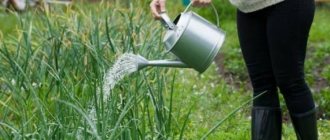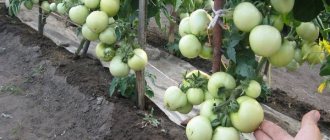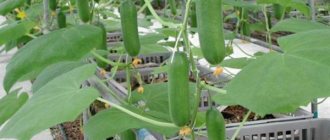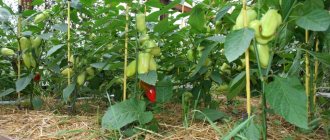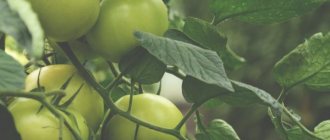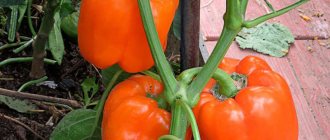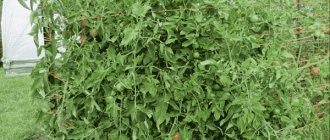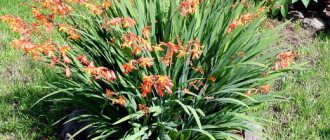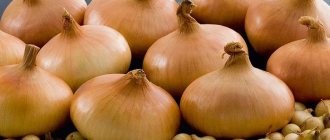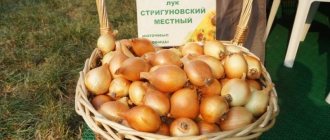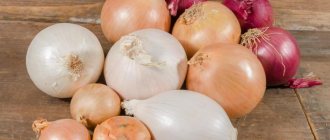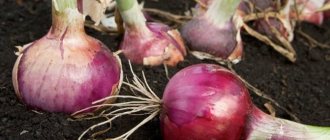Owners of private plots are wondering whether it is profitable to grow onions as greens in winter? This question may arise from a person who has never cooked food on his own. Any housewife knows perfectly well that it is impossible to live without this greenery either in summer or in winter. Its cultivation is possible not only on the windowsill in the house, but also in a greenhouse. Especially when there is a desire to get some profit from it.
It is important to remember that growing such a crop in a greenhouse in winter is very profitable for several reasons:
- it will be possible to achieve higher yields;
- this makes it possible to use racks in several tiers;
- this type of greenery will be available not only in winter, but also in other months;
- This is a very profitable business that brings in a solid income.
It is also necessary to remember that onions grown for greens in winter in a greenhouse are those vitamins that are so lacking in the cold season. But due to their insufficient quantity, you can encounter colds.
Varieties
Which onions for greens in a greenhouse in winter are best to deal with? Not all varieties of this crop are suitable to be grown in this way. It may turn out that you do everything right, invest a lot of effort and money into this business, but the profit turns out to be insignificant. And all because the wrong variety was chosen, since it grows poorly in such conditions or bears fruit late.
It is important to know: Not only late or mid-late, but even medium varieties are completely unsuitable for this purpose.
It is better to grow onions in winter in a greenhouse, which produce greens very quickly:
- Slime onion – great for year-round cultivation;
- Onions – characterized by high yield;
- Trampoline onion - in any winter month it will give a good harvest;
- Leek, the feather of which is somewhat similar to garlic, but has its own taste;
- The Egyptian variety is distinguished by the fact that it easily tolerates even frost. It is better to plant onion no earlier than December. It is very profitable to grow the Chinese variety, as it is a perennial plant.
Instructions for growing onions in a greenhouse: varieties for greens and feathers
Green onions are a useful and beautiful ingredient in most dishes, so many gardeners sooner or later think about growing onions in a greenhouse, because in this case they can enjoy fresh and juicy greens all year round.
The photo shows an onion plantation in a greenhouse
Features: What you need to know
Growing onions in greenhouse conditions compared to growing the crop in open ground has a number of advantages for the gardener:
- high productivity;
- possibility of using racks;
- Possibility of year-round cultivation and harvesting.
How much does it grow?
Experienced farmers believe that three weeks after planting the plants reach technical maturity. In this case, the length of the greenery will already be approximately thirty centimeters.
Why don't the onion sets come out?
A feature of planting onions of this type is the need to plant the sets only at the optimal temperature for them.
The norm for planting bulbs in the ground is considered to be a temperature of about 10-12 degrees Celsius. The earth must warm up enough for the onion to adapt to new conditions and produce the first shoots.
The air temperature should not fall below four degrees. During a prolonged cold spell, all seed material may die.
Light frosts will not harm the earliest seedlings, but for older plants, a temperature of -5 degrees can stop the growth and maturation of seeds.
With significant cooling, the bulbs are not able to absorb a sufficient amount of moisture, as a result of which the plant will be weakened, the fruits will be thin and small, and the germination rate of the crop will be low.
Who eats onion bulbs in the greenhouse?
There are many pests that can ruin the onion harvest.
The most common include:
- onion fly (onion flower): especially harmful during the period of growth and the beginning of onion development; the crop is characterized by wilting, larval tunnels form inside the bulbs, the leaves turn yellow, the bulb rots;
- onion hoverfly (onion root beetle): cause damage mainly in the second half of the growing season; the plant is stunted, the leaves turn yellow and wither, the bulbs soften and rot;
- shallot aphid: especially harmful to forced onions in autumn-winter and early spring; Damage is characterized by wilting and bending of leaves, stunted growth, feathers become contaminated with molt skins and honeydew;
- tobacco thrips (onion thrips): the fleshy scales of the onion are characterized by roughness and drying out, light stripes and spots with small dark dots form on the leaves, the feathers are damaged and acquire a whitish color, bend and dry out;
- onion rattle: the pest is especially active during the growing season; through holes form in the leaves and arrows, causing the plant to break off; the larvae penetrate inside the tubular leaf;
- four-legged onion mite: especially dangerous during onion storage; yellow or green spots appear on the fleshy scales, drying out occurs in the damaged areas in winter, the tops of the leaves turn yellow during the growing season, and the plant lags behind in development and growth;
- onion mite: especially active during storage; The bottom is damaged first, then the entire bulb rots.
READ ALSO: What you need to know about planting radishes in a greenhouse and step-by-step instructions
Pest control measures depend on the type of insect and the stage of damage to the plant.
How to eliminate the smell?
Experts believe that it is almost impossible to get rid of the smell of green onions in a closed greenhouse due to the release of essential oils found in the feathers. The only option is to regularly ventilate the room; the main thing in this situation is to monitor the overall air temperature in the greenhouse so as not to “freeze” the crop.
Onion on a feather in a greenhouse
Varieties
Experienced farmers are recommended to use multi-primed plant varieties and hybrids (early and early ripening) with a short growing season and dormant stage.
Attention: The most common onion for forcing is considered to be onions, of which there are more than seventy varieties and varieties in our country.
Farmers consider the best species for forcing “to grow” in greenhouse conditions:
- "Strigunovsky local";
- "Danilovsky 301";
- "Bessonovsky local";
- "Spassky local improved";
- "Karatalsky";
- "Mstera local."
Proven early varieties with established characteristics include the following multi-germ varieties:
- "Rostov onion";
- "Bessonovsky local";
- "Ryazan";
- "Skopinsky".
In addition, there are many types of onions suitable for growing “for greens”:
- leek (synonym for “pearl”): the feather is similar to garlic, delicate delicate taste, there is no bulb, but there is a thick white stem;
- shallots: easy to care for, large number of feathers;
- chives (“chives”): narrow feathers with a pleasant aroma;
- slime: flat, wide feathers with a soft structure and a garlicky smell, a large amount of useful substances; early ripening variety;
- multi-tiered (“Egyptian”): frost-resistant, high-yielding and unpretentious variety;
- batun (“Tatar”, “sandy”): smooth greens, does not form a bulb, twice as healthy as other types.
Productivity
The yield of onions per feather depends on the type of plant, for example:
- onion: about 35 kilograms of greens per 10 square meters;
- chives: about 30 kilograms of greens per 10 square meters;
- leeks: about 20 kilograms of greens per 10 square meters;
- shallots: about 30-40 kilograms of greens per 10 square meters;
- onion parade: about 65 kilograms of greens from 10 square meters.
Growing
The technology for growing onions “by feather” in a greenhouse is as follows:
- preparation of planting material: sort and eliminate bad bulbs;
- cut off the top ¼ of the onion;
- Soak the bulbs in warm water (36-38 degrees) for 12 hours;
- for 2-3 kilograms of planting material, one box with an area of 0.25 m2 is needed;
After 12-14 days, a strong root system will form and a feather about 5-8 centimeters long will appear. After this, the crop must be thoroughly watered and the temperature increased to 22 degrees.
After a few days, you can use mineral fertilizer.
Attention: Green onions can grow in any soil except sandy and rocky soil.
The quality of the soil directly depends on the amount of mineral fertilizers it contains.
Two days before planting the bulbs in the ground, it is necessary to fertilize the soil using natural substances.
It is recommended to harvest only after the feather length exceeds 35 centimeters. Trimming must be done in such a way that the lower part of the feather is clean and not too thin.
Onions on greens in a greenhouse
Varieties
The most popular types of onions for greens in greenhouses are:
- chives: frost-resistant;
- perennial;
- the main harvest of greenery is only in the second year after planting (about 10 kilograms per 1 square meter);
- the best varieties: “Pink K-1669” and “Siberian K-1670”.
- perennial;
- perennial;
- cold resistant;
READ ALSO: What you need to know about planting radishes in a greenhouse and step-by-step instructions
Planting and growing
The algorithm for growing onions in a greenhouse depends on the season: to get an early harvest in the spring, it is necessary to grow the crop in “cold” greenhouses, and in the cold season - in heated ones.
It is also necessary to take into account the nuances of crop rotation: it is best if the predecessors of onions were tomatoes, eggplants, carrots or beets.
How to grow green onions in a greenhouse in winter?
To grow onions for greens in winter, you will need a heated greenhouse. At the moment, the most common option is a polycarbonate greenhouse. The correct shape of the greenhouse plays a huge role, thanks to which the snow should roll off the structure and not break the coating with its own weight.
It is necessary to install a greenhouse for onions in well-lit places, since in this case the costs of heating and lighting will be significantly lower.
The following types of greenhouse heating are allowed:
- gas;
- stove;
- water;
- using solar panels.
In winter, it is necessary to provide the onions with additional light using fluorescent lamps.
The selected onion variety can be planted in early November. Onions are grown in a greenhouse directly in the soil or in boxes with peat.
Watering is done with warm water in order to “wake up” the bulbs after the dormant stage.
Watering and fertilizing must be carried out in accordance with the individual characteristics of caring for each variety.
At the first stage of growing onions, the air temperature should be within 20-22 degrees; as the feathers grow, it must be lowered to 16-18 degrees.
in spring
Before planting onions in spring, you need to prepare the bed in advance: dig it up and fertilize it with manure, potassium chloride and superphosphate. Planting material must be sorted and rotten or dry bulbs removed.
When planting, it is necessary to place the bulbs in rows, maintaining a distance of three centimeters between plants. Subsequently, the beds must be insulated with peat.
When the snow begins to melt, you can begin to force the onions to grow. To do this, you need to remove the snow, remove the insulation and install a greenhouse. In this case, a film greenhouse is also suitable.
As the soil dries, the soil must be watered, loosened and nitrogen fertilizers applied.
If everything is done correctly, the harvest will be possible in early May.
Top dressing
When growing onions “for greens” in a greenhouse, you need to remember some features:
- during the growing season, onions especially need to be fertilized with wood ash scattered on the beds;
- potassium salt helps prevent infection of the crop with a fungal disease;
- for chives, one of the best fertilizers is the addition of humus and lime;
- It is best to fertilize in the cool time of the day - in the evening;
- Do not allow mineral fertilizers to come into contact with onion leaves;
- Increased soil acidity is neutralized with chalk or lime.
READ ALSO: What you need to know about planting radishes in a greenhouse and step-by-step instructions
Harvesting onions in a greenhouse
Experienced farmers believe that it is possible to harvest multiple times, but it is necessary to understand that more than three or four feathers cannot be removed from one plant at a time, since otherwise the bulb may rot, which means that new feathers will either not appear at all, or will look painful.
Organization of winter greenhouses
To obtain a high-quality and rich onion harvest, it is necessary to choose the right design for growing the crop.
A summer greenhouse for growing green onions has the following features:
- it is permissible to use a wooden frame and use film as a covering material;
- heating of the summer greenhouse is not required;
- The length of daylight hours in the summer allows you to avoid the use of additional lighting.
The following features are typical for growing green onions in a greenhouse in winter:
- the frame can be wooden, but it is preferable to use a metal structure;
- when using a wooden frame, the wood must be treated with a primer or painted to avoid deformation;
- the wooden frame should have a shallow base, since wood does not have much mass;
- the base material should be selected taking into account the quality of the soil on the site and the size of the structure;
- when using a metal frame, the structure must be treated with a primer or paint to prevent the formation of corrosion;
- all metal elements are fastened by welding;
- It is desirable to use polycarbonate as a covering material: polycarbonate sheets maintain temperature conditions, do not allow cold air to enter the greenhouse and are practical and resistant to strong gusts of wind (a weight of 25-50 kilograms is permissible per square meter;
- a metal frame will also require a base, the manufacture and installation of which should be carried out taking into account the size and material of the structure.
To grow onions in a winter greenhouse, a microclimate favorable for the crop must be maintained, therefore it is necessary to use systems for:
- heating;
- lighting;
- irrigation.
Heated greenhouses for growing onions
Heating the greenhouse is a prerequisite for growing onions in winter.
For heating, experienced gardeners recommend using gas or electric boilers, the pipes of which can be evenly distributed around the entire perimeter of the greenhouse.
Lighting
Since daylight hours in winter are significantly shorter than necessary, the farmer’s main task is to artificially increase daylight hours through the use of lamps and daylighting devices. It is especially important to distribute lighting equipment evenly throughout the entire structure.
Hydroponic greenhouses for onions
The use of hydroponics is a unique method of growing plants, in which not soil is used as a nutrient medium, but a special solution with a certain concentration of useful substances.
An important feature of hydroponics is the ability to feed onions with useful substances:
- potassium;
- calcium;
- zinc;
- magnesium;
- gray;
- nitrogen;
- phosphorus;
- iron.
Foam rubber or expanded clay is most often used as a substrate.
The use of hydroponics in greenhouses for growing onions allows you to achieve:
- increasing productivity;
- strengthening plants;
- no need for regular watering;
- reducing morbidity;
- reducing the number of insect pests;
- no need to use chemicals for pest control;
- absence in plants of radionuclides, nitrates and heavy metals, which are always present in the soil.
Shelf size
The size of the shelves in the onion greenhouse must be selected based on your own wishes and capabilities. The main condition is to maintain the ability to have access to all plants.
Thus, having a properly installed and well-equipped greenhouse will allow the farmer to receive a rich and high-quality harvest of green onions all year round.
Video
Look at the following recommendations for growing onions in a greenhouse:
To prevent the soil from drying out and losing its moisture, you need to add wood shavings. Due to it, the earth will be more fluffy and will not lose moisture.
Greenhouse equipment
When planning to grow onions in a greenhouse in winter, you need to prepare everything correctly. It is important to equip the greenhouse so that it is not damaged by precipitation or sharp gusts of wind. For these purposes, a polycarbonate greenhouse is best suited. It can be placed even in a small area. And installing it is not very difficult.
In order for the soil to warm up well in winter, you need to worry about a reliable foundation.
Also, when equipping it, you must not forget about the following systems:
- watering;
- heating;
- lighting.
It is important that the plants continue to grow both during the day and at night. In this case, such a crop will give a higher yield.
Most of the money will go to the greenhouse complex itself, but such expenses will be justified. If you want to save money, then you can assemble and install such a structure yourself. Also, if you don’t buy ready-made hydroponics, but manage to prepare it yourself, this will also help you save something. And you will need a lot of ready-made planting solution.
What should be in the greenhouse when onions are grown in winter
Photo of a winter greenhouse
Growing greens and onions in a greenhouse is characterized by the creation of favorable conditions inside the structure. These include:
- Heating.
- Lighting.
- Irrigation.
So:
- Electric or gas boilers are used for heating, the pipes from which are evenly distributed around the entire perimeter.
- Lighting should provide an increase in daylight hours through the use of lamps and daylight fixtures. They must also be distributed evenly within the structure.
- Watering in a greenhouse for growing onions can be mechanical or automatic.
Advice. If the greenhouse or greenhouse is quite large, then in order to save energy and time it is best to use automatic irrigation systems.
In order to set up the automation there are specific instructions. In accordance with all recommendations and rules, electrical energy is connected to the system.
Growing technologies
It doesn’t matter, we are talking about growing onions for harvest in a greenhouse in the winter for yourself or for sale, you want to have a ready-made harvest as quickly as possible. And the second important point is the presence of such greenery throughout the cold season. And in early spring, you want to saturate your body with vitamins. And you need to know how to quickly get this green harvest.
Seeds or bulbs
In any case, feathers as greenery can be obtained both from seeds planted in the soil and from bulbs. But the ripening period will be different. And this plays a significant role when it comes to making a profit. And I myself want to get ready-made greens as quickly as possible. So it turns out that it is more profitable to plant bulbs in prepared soil rather than seeds. The feather will grow out of them much faster. If the greenhouse is unheated, then it is better to plant nigella in it in early spring. But for this, the seeds must be properly prepared. Before planting, they need to be soaked.
In the sawdust
Many gardeners grow onions for greens on sawdust. Sawdust retains moisture well. But at the same time, they allow oxygen to pass through perfectly. This is achieved due to the porous structure of sawdust. But in order to disinfect them, in order to remove various bacteria and microorganisms, the sawdust must be treated with boiling water. The landing process consists of the following steps:
- preliminary soaking of the bulbs using a solution of potassium permanganate;
- sawdust is prepared and placed in containers;
- bulbs are laid out on top;
- then all this is covered with an additional portion of sawdust;
- after this you can start watering the sawdust with warm water;
- To make the feather appear faster, areas with planted bulbs are covered with film.
Hydroponics
Growing onions hydroponically seems more attractive, since there is no need for soil at all. The bulbs are simply placed in vessels with water, where nutrients are added. But this option is not very cost-effective, because it will require significant costs for a hydroponic installation. True, these costs are later compensated.
Which greenhouse is best to plant in?
Greenhouse conditions are considered optimal for achieving rapid and healthy plant growth. Since in these conditions it is possible to create constant temperature, humidity and light.
Greenhouses can be made from different materials. Glass, polycarbonate, and film are also suitable. It all depends on the quality of the soil, the function of the structure, etc. The most important thing that needs to be taken into account when building a greenhouse or greenhouse is that in autumn, winter and early spring it must be sufficiently lit and heated. These are two main factors that affect the final yield of the planted crop.
Many gardeners prefer polycarbonate coating. It retains heat better than glass, and is stronger and thicker than film, but is transparent enough to transmit light well.
The shape of the greenhouse plays a significant role for growing onions. In cold weather, snow covers the greenhouse, thereby preventing sufficient lighting.
In this case, you need to switch either to artificial light or remove the snow cover in a timely manner. Snow does not stay on gable and round roofs.
The greenhouse frame can be anything, but when using them you need to perform some steps. Thus, a wooden frame needs periodic painting, antiseptic treatment, and primer. Otherwise, the base will deform and rot.
A metal frame is most often used, as it is stronger and stiffer than a wooden one. But even in this case, care is necessary: to avoid corrosion, the product must be periodically painted or primed.
The soil
Onions are not very picky about the type and composition of the soil. Therefore, almost any land can be used for planting it. But still, in order to increase productivity, several conditions regarding the soil must be met.
The soil should be:
- wet;
- loose;
- with feeding.
How can you make black soil loose? You just need to add sand to it.
If we are talking about growing onions in a greenhouse in winter for beginners, then such preparation may be quite enough. But it is much more profitable to use not just soil, but to make special racks. And then boxes are installed on them, into which soil is already poured. It will definitely need fertilizing in the form of wood ash. This will help achieve a higher yield.
Gardener Ilya Bydyashkin in his video shows the arrangement of his greenhouse with racks for the profit of green onions.
Preparation of soil and planting material
Onions can be planted both on a soil substrate, the basis of which is ordinary garden soil, and on artificially created soil, the basis of which is sawdust. For beginners in this business, it is advisable to use ordinary soil, which is located in the greenhouse. You just need to mix it with humus or compost in the fall, adding a bucket of these components per 1 square meter. m. soil.
You can even grow onions for harvest in boxes placed on the surfaces of shelving. In this case, the thickness of the soil layer in them is approximately 5-6 cm. If the boxes are sealed or covered with plastic film, then it is imperative to provide drainage holes in them to drain excess liquid when watering. Otherwise, the bulbs may simply rot from excess moisture.
Preparing the onion itself involves several procedures. To begin with, before planting, the onion must be placed in a warm room for several days and allowed to warm up. After all, onions are usually stored at a temperature of about + 5 ° C so that they do not germinate.
Then the bulbs need to be sorted by size. For forcing, you can use bulbs with a diameter of 3 to 8 cm. Larger bulbs may no longer give the expected effect of increasing the yield, and smaller ones will form feathers that are too thin and weak.
It is best to have bulbs of approximately the same size in the box. In this case, germination will be more uniform. To speed up the process, as well as for more beautiful and uniform germination of the feathers, the necks of each bulb are cut off, leaving approximately ¾ of the bulb itself.
No less important is the soaking procedure. In extreme cases, you can do without it, but it significantly speeds up the germination process and, most importantly, disinfects the planting material. Onions are usually soaked directly in bags in warm water at a temperature of + 50 ° C with the addition of potassium permanganate.
Attention! The soaking period can range from several hours to a day.
Temperature
The temperature in the greenhouse is also important, as it should be ideal for growing such greens. For its germination you will need from +15 °C to +18 °C, and in some cases up to +20 °C. The temperature depends on the selected variety. But if we are talking about growth, then you can save a little on heating. Here you can keep the temperature to +10 °C, this will be quite enough. And given that it takes more time just for growth than for germination, a lot of money will not be spent on heating the greenhouse in the winter.
- If the temperature in the greenhouse is high, reaching +25 °C, the grown feather will be tall, but thin, and bitterness will be felt in it. And because of their height and weight, they will begin to lie on the ground, so you won’t be able to get much profit for them.
- If the temperature is lower, the leaves will stand straight and are distinguished by their strength.
Watch a video of gardeners from Krasnoyarsk who have been successfully growing onions in a greenhouse in winter for many years, even in the harsh conditions of Siberia.
Which onions to plant before winter on greens
There are many types of onions suitable for planting before winter, which differ in appearance, taste and ripening time.
Batun
Onions, which are often grown for greens. Onion is a perennial plant that grows in one place for up to ten years.
The first 3-4 years after sowing are the most productive.
Onion leaves are tubular, up to 40 cm high, up to 2 cm in diameter. Dark green, covered with a thin waxy coating. The batun has a well-developed root system.
The false bulb is oblong in shape, poorly developed, and has a mildly spicy taste.
Important! The species is frost-resistant. Greens grow from early spring to late autumn and tolerate low temperatures down to -8°C.
Productivity is high: up to 10 kg of leaves are cut from 1 m2 over the summer.
The most popular varieties, characterized by high yields: Maysky, Aprilsky, Russian Winter, Tenderness.
Schnitt
Another name for the species is chives. It has the shape of a spreading bush. Most often found in flower beds as a decorative ornament.
Popular varieties : Grass, Spring of the North, Green Ray, Karat, Elvi.
The leaves are tubular, up to 40 cm high. The color is bright green, the taste is pungent. The root system is branched. A small bulb forms in late summer.
Schnitt is unpretentious, resistant to low temperatures, and grows in regions with harsh climates. From 1 m2 up to 6 kg of greenery is harvested per season.
Slime
Salad onions contain large amounts of vitamin C and iron.
It tastes more like garlic.
The leaves are wide, flat, up to 30 cm in length, dark green. The plant has a well-developed root system.
The false bulb is cylindrical in shape, with 2-3 bulbs attached to each rhizome.
From 1 m2 per season, up to 3-4 kg of greens are harvested.
The most productive varieties: Green, Leader, Charm.
Multi-tiered
The second name of the species is Egyptian.
On the peduncle of the plant, bulbs form, forming several tiers.
The height of the first tier reaches 50 cm, the subsequent ones - up to 20 cm. Up to 4-5 tiers are formed in one season.
The leaves are hollow, up to 80 cm long, dark green with a waxy coating.
The taste is spicy. A false bulb is formed. The root system is branched.
Onions are resistant to low temperatures. During the season, 3-4 kg of greens are collected from 1 m2.
Popular varieties : Likova, Memory, Chelyabinsk.
Lighting
You definitely need to worry about the light in the greenhouse. In winter, daylight hours are short, so artificial lighting is indispensable. But you don't have to worry about this too much because these plants won't need light 24 hours a day. It is necessary to ensure that there is at least 12 hours of daylight. This means that artificial lighting will only be used for 6-7 hours. Particular attention should be paid 12-14 days after planting, when feathers begin to develop. Otherwise, development will slow down, the feather will not only be elongated, but will not gain the required green color and will turn out to be light green. To achieve good results, a large dose of light will be needed during the last week before harvest.
It is important to choose the right spectrum of lighting for growing onions in winter. It is best to choose fluorescent lamps with a blue spectrum. For this purpose, linear metal halide lamps are usually used.
However, among amateur gardeners, there is successful experience of growing onions in a greenhouse in winter without the use of artificial lighting. Denis Ulyanov, who has been forcing onions for several years, shares his experience:
What conditions are required?
Onions in a greenhouse in winter will grow well if the necessary conditions are met. To do this, it is necessary to prepare the soil, select suitable planting material and maintain optimal temperature and humidity levels in the greenhouse.
The best conditions for onion growth:
- The temperature should be maintained in the range of 18 - 20 degrees Celsius during the day and 12 - 15 degrees at night.
- For photosynthesis, it is necessary to provide daylight within 10 - 12 hours, so it is necessary to install lighting lamps in the greenhouse.
- Regular watering with water, the temperature of which will not be lower than 20 - 30 degrees. For dense plantings, you can consider a fine spray system.
- For good results, fertilizers are applied to each square meter of soil at the rate of a bucket of manure (necessarily rotted), 30 grams of superphosphate and 15 grams of potassium chloride.
- Air humidity should be between 60 - 70%. Too high an indicator negatively affects the health of plants, leading to fungus and mold.
The greenhouse must be equipped with a heating system and ventilation. It should be borne in mind that plantings will need oxygen for successful growth, so it is imperative to provide daily ventilation. This procedure will also help harden the plants and also normalize high humidity levels.
Humidity
When you plan to grow onions in a greenhouse for greens, you need to think about ensuring optimal humidity of both the soil itself and the air in the greenhouse. Air humidity should be between 70 and 85%. But the onion variety also plays a big role here, so you need to know when to water the plants more and when less moisture is needed. The water for irrigation should be a little warm. If it turns out to be cold, the desired result will not be achieved, the plant will simply slow down its growth.
For the first 2 weeks you need to water at least twice a week. And in some cases, more often. And then you can water it only once a week.
When watering is carried out, we must not forget about the correct temperature regime. If it was from +15 to 18 °C, then when watering it needs to be raised to +18 or even 22 °C. This only needs to be done once a week, and then the temperature can be lowered again.
Onion care ↑
Caring for onions in heated and unheated indoor spaces (film greenhouses and hotbeds) is the same. The number of distillations depends on the room temperature. In heated greenhouses, forcing can be carried out year-round, in greenhouses and cold greenhouses only when a suitable external air temperature occurs on prepared warm substrates (the use of manure, humus, peat, compost and other materials). When optimal conditions are created (temperature, humidity, lighting), the plantings turn green in 4-5 days, increasing biomass up to 3-4 cm per day. Thus, the forcing period takes, depending on the variety or hybrid, from 15 to 24 days.
Lighting ↑
Illumination of onions in the initial phases of development allows temporary breaks, but starting from the age of 12-15 days, the crop requires round-the-clock lighting. Otherwise, the feather becomes stiffer and turns yellow.
Temperature ↑
The temperature indoors before growth begins during the day is maintained within +22 °C, then it can drop to +18..+20 °C. In order for the forcing crop to develop normally, the soil temperature in the first week of forcing should be +12..+15 °C, and in the remaining period until the end of forcing, about +20 °C. For non-industrial production, night temperatures can be reduced to +12..+13 °C to stop plant growth. A further decrease in night temperatures negatively affects the culture and quality of green feathers.
Watering ↑
Watering is carried out once every 7-9 days. At first, the water is heated to +25 °C, and then it can be reduced to +20 °C. An abundance of moisture and a lack of heat causes root rot.
Top dressing ↑
For home use, it is better not to fertilize when forcing onions, but if pale and thinned feathers appear, you can carry out foliar fertilizing with solutions of urea, crystallon or kemira. 10-15 g of fertilizer are diluted per 10 liters of water and the plants are sprayed. Finish fertilizing by watering with clean water to wash off the fertilizer from the green mass of the plants.
During industrial forcing, where it is necessary to obtain a large amount of products in a short time, 2-3 feedings are carried out every 7-10 days, with the last one 10 days before harvesting. The first is a 1% solution of nitrogen fertilizer mixed with potassium chloride, the subsequent ones are better with biofertilizers “Gumisol”, “Baikal EM-1”, “Vermistim” and others.
Planting and growing
When planting onions, you should consider its variety. In some cases, it is more preferable to cultivate by seed. But other varieties are planted by selecting seedlings. It is necessary to check that the soil is moist. But under no circumstances should overflow be allowed. In this case, the bulbs will begin to rot.
It is advisable to plant the bulbs in rows, this will make it easier to care for them. You can sit next to each other. It is better not to use pure black soil for growing this crop. It is much better if the soil is sandy. But it is advisable to fertilize it, if not with peat, then at least with ready-made humus. It is important to remember that this plant loves light and warmth, but elevated temperatures are dangerous for it.
Look what crops gardeners from northern Asia managed to grow in a greenhouse in winter.
How to grow onions in a greenhouse in winter - a detailed business plan
A business plan is your insurance against unnecessary expenses. It is necessary to analyze each stage of business development, calculate business profitability, and calculate start-up costs. Planning will help you weigh all the pros and cons of the project, find where and how to sell the products.
The business plan includes choosing a growing technology, installing a greenhouse and equipment, and searching for buyers. Let's consider each of the planning stages in more detail.
Stage 1. Construction of the greenhouse
To start, all you need is a small polycarbonate greenhouse that will fit on your garden plot. Make a foundation in it for greater structural strength and better soil heating, install an irrigation, heating and lighting system.
The purchase of equipment and installation of a greenhouse complex is the largest share of costs at the start. But without creating conditions for plants, you will not get high yields.
Don't have substantial start-up capital? Assemble the greenhouse yourself without hiring specialists. Instead of a sprinkler system, use a regular watering hose. Assemble the racks from scrap materials.
Rational use of solar heat will help you save on heating costs. Use drawings and diagrams from the Internet. Adapt the finished frame drawing to your site.
Stage 2. Selecting and purchasing seeds
Buy material for sowing (onion sets, seeds) only in specialized stores or in greenhouse complexes. Use planting sets and seeds to obtain stable harvests throughout the year.
Carefully inspect the seed. The bulbs must be strong, without rot and characteristic odor. Seeds are the same size, without white or grayish coating.
Stage 3. Soil preparation
Onions are not picky about soil. It is desirable that it be moist, loose, and contain additional food. Add sand to the soil for growing it to loosen it, as well as pre-prepared or purchased compost and wood ash. Pour the prepared soil into boxes on racks, level and moisten.
Don't know what to choose: sawdust or soil? Watch a video comparing the yield on sawdust and on soil:
Stage 4. Growing greens
The soil should be moist, but not overwatered. Excessive moisture will cause the bulbs to rot. The dry period will slow down the growing season. Onions love light and warmth, but cannot tolerate heat. Monitor the optimal temperature level in the room.
Stage 5. Sales of finished products
Properly organized sales of products is the key to a successful business. Sell your grown crops at local vegetable markets. Visit supermarkets, catering establishments, offer your goods to wholesale buyers.
To sell greens at the market "from hand" you will not need documents for trading. To rent a retail outlet at the market, sell in supermarkets and grocery stores, you need to register with the state tax service.
Open an individual entrepreneur or peasant farm. OKVED code 12.1 - entrepreneurship in agriculture (growing beets, cucumbers, seedlings for sale and other types of agricultural business) and 12.2. - growing greens. Taxation is 6% according to the Unified Agricultural Tax.
Don't forget about advertising. A bright sign, promotion on social networks, on online trading platforms, stickers on cars - all this will make your production recognizable and your products popular.
Top dressing
When growing onions in a greenhouse in winter for sale, you must not forget about periodic feeding. For this purpose, nitrogen-mineral fertilizers are usually used. They must be combined with watering. That is, you need to add them once a week. It is best to use a mixture of ammonium nitrate. But it’s good if such fertilizing is combined with potassium chloride. Urea is also great.
To grow onions in winter in a greenhouse, it is better not to use organic fertilizer. That is, it is advisable to exclude any humus.
When fertilizing is applied, under no circumstances should drops of it be allowed to fall on the stems, as this will lead to the appearance of light spots.
Features of proper care: tips for beginning gardeners
For effective crop germination, you must adhere to the following steps:
- water the plants moderately and promptly using a sprayer, as a strong stream of water washes out the seeds and nails the feather to the ground;
- loosen the soil for a full flow of oxygen;
- weed the beds;
- ventilate without creating drafts;
- apply fertilizers before planting and during onion growth;
- maintain air humidity within 70-80%.
Due to the short growing period of feathers, chemical mixtures cannot be used to control pests or diseases.
To prevent their occurrence, before planting onions in the ground in winter and at other times, the greenhouse should be disinfected. If diseased specimens are discovered during growth, they are immediately removed, and the soil under them is replaced with a new one and treated with wood ash.
Greens are a storehouse of vitamins; in addition, the benefits of onions are invaluable during the cold season, as they are natural antibiotics. How to store and grow green onions in a plastic bottle, sawdust, water without soil in winter and at the end of summer - read our articles.
Harvesting
Whatever the winter turns out to be, cold or not, if you choose the right onion variety, you can get a harvest very quickly. If, according to forecasts, it will be very cold in winter, and the temperature in the greenhouse will drop to zero, then it is better to plant the Egyptian variety, it is not afraid of such changes. In any case, harvesting is already possible a month after planting.
Watch a video in which a gardener compares technologies for growing onions in a greenhouse in winter using pine sawdust and soil.
Which variety to choose
All varieties of onions produce feathers, but greenhouse production has its own favorites. They produce a bountiful harvest, have excellent taste, retain freshness for a long time, and are easy to care for.
I'll tell you briefly about each of them.
Leek
Externally, leeks resemble garlic. It produces wide, short leaves and has a pronounced but delicate taste. Good for salads and fresh consumption. From a bed of 9 square meters it produces 20 kilograms of feathers. Suitable for year-round greenhouse cultivation. Grows well in open ground and greenhouses.
Batun
It can be perennial or annual. Produces wide, tubular, succulent feathers. The taste is sweetish and delicate. The feather is tender throughout the growing season. Sown by seeds. In the first season, the plant takes root and gains strength.
Active fruiting begins in the second year. The variety tolerates frost well and is suitable not only for open ground, but also for greenhouse and greenhouse cultivation. Gives arrows with seeds. It sows itself in the ground.
shallot
This is a branched variety with pronounced greenery and small bulbs. The variety is suitable for forcing in a greenhouse and growing on a windowsill. It is planted on greenery three times a year: in spring, autumn and summer. Gives an early harvest. The feather is soft and juicy throughout the growing season. The shooter does not. Planted with bulbs.
Egyptian
This variety has underground and aerial bulbs. It is called multi-tiered because new bulbs grow on its arrows, from which a young plant develops. It does not have a dormant period and bears fruit consistently all year round. Unpretentious. Grows well even at 10-12 degrees Celsius. Frost-resistant, suitable for cold regions.
Plant several varieties at once in a greenhouse. The range of your products will be wider, and your yield will be more stable.
How to grow onions in a greenhouse in spring?
Onion seeds are not often used for planting in winter in a greenhouse. Firstly, this option is more suitable for growing in large-scale production. Secondly, the initial costs will be too high. And thirdly, it will not be possible to get a harvest very soon; usually the feather will be ready for cutting no earlier than after 2 months. So it turns out that it won’t be possible to sell it profitably with small production.
It is best to plant seeds in a bud in early spring. To do this, select varieties that are able to reproduce non-vegetatively. The landing method here is as follows:
- soaking in potassium permanganate a week before planting;
- for good swelling the temperature should be +20…+25 °C;
- After swelling, the seeds are removed from the vessel with water to dry.
To dry, the seeds are distributed on fabric, and when sprouts appear, they can be planted in the soil. For this purpose, furrows are used, which are then covered with earth.
Features of growing in a greenhouse
Growing onions is beneficial in winter. Demand for it is growing at this time, which is reflected in the purchase price. In the southern regions, forcing onions is cheaper, since heating and lighting costs are lower.
To open a small business for growing onions with 1-2 greenhouses, registration is not required. There is no need to hire labor. Medium and large greenhouse businesses require registration, paying taxes, maintaining accounting records, and attracting hired workers.
The funds spent on the construction and equipment of the greenhouse, the purchase of seed material, and fertilizers are paid back in an average of 6 months. To increase profitability, in addition to onions, no less popular dill, aromatic basil, and healthy parsley are grown in the greenhouse.
Multi-bud onion on a feather for planting
The key to the very profitability of a business is the variety of onions. There are some characteristics of onion varieties that must be suitable for the requirements of onion forcing. Experienced bowmen strive to use a multi-blade and multi-nest bow on a feather. To achieve the goal, some roam the vast expanses of our vast country in search of a supplier, others take risks and order suitable varieties remotely from other regions. I do not recommend you start with such risky actions.
To begin with, I advise you to buy onions for feathers at the nearest wholesale markets or bases. You can also use popular message boards. They often offer to buy a multi-bud bow for a feather at a good price. There are some popular varieties that make forcing onions more profitable. This is achieved by increasing the percentage of feather output per square meter. Thus, a correctly selected multi-bladed bow on a feather will increase your profits. The top three that I recommend finding and buying onions for feathers are the varieties Karatalsky, Rostov local, Stuttgarter Riesen, Egyptian and Chalcedony. I wrote a separate note about these varieties, which I recommend reading - The best varieties for forcing onions.
Photo: Multi-germ onion for a feather There is also a variety of multi-germ onion for a feather - Rostov.
But to what extent I’m telling the truth, I don’t know. I only came across this variety once. Judging by the appearance and reviews of fellow onion growers I knew, whom I asked, it was him. The result is simply excellent. Unfortunately, I never came across it again. But, if you suddenly come across this bow, take it without hesitation. Of course, don’t forget to look at the quality of the bulbs. The onion must be intact, without signs of rot. When cut, it is healthy, juicy and white. The presence of blackness, larvae and softness of the root bottom indicates contamination of the planting material. You can’t take such an onion even by the “hat of crackers.” Having contaminated a greenhouse with one batch of onions, you can sometimes forget what it means to force onions to grow for the entire season. The caliber of the bow per feather in turn affects the landing speed. If you take a selection of onions with a caliber of 2-4 cm, the feather will be thin and it will take longer to plant. And if you buy an onion on a feather with a caliber of 5-10 cm, the feather will be thicker and plant it faster.
Preparing indoor soil for growing onions
Onions can be grown in a summer greenhouse by planting them in the fall or at the end of winter. Forcing the feathers will happen much faster than in open ground, and the onions for salad will be ripe already in March-April. If you want to cultivate a plant in a greenhouse all year, you need to prepare it.
Onion plantations in a greenhouse
Rules for arranging a greenhouse
Green onions can be grown in a greenhouse year-round if the following conditions are met:
- The greenhouse must be heated. In winter, when forcing feathers, the daytime temperature should be maintained at 20-23? C, and the night temperature should not be lower than 14-15? C.
- Illumination. Plants need light for the process of photosynthesis. In conditions of short daylight hours in winter, it is necessary to ensure that the onion stays under light for at least 13-14 hours a day. It is recommended to place fluorescent lamps strictly vertically, then the feather will grow straight and without kinks. If the bed is multi-tiered, separate lighting should be made for the lower tiers.
- Humidity. In a greenhouse for growing onions, it is necessary to maintain moderate humidity, avoiding drying out or waterlogging of the soil. The optimal regime for watering the plant is once every 4-5 days.
Illuminated onion racks
Basic soil requirements
Green onions grow well in sandy soil mixed with peat and fertilized with humus. Before planting it, experienced gardeners advise digging up the soil, adding fertilizers - manure or compost (1 bucket), sodium chloride (15 g), superphosphate (30 g) per 1 square meter of soil.
Onions do not require a lot of soil to grow into feathers, so it is recommended to cultivate this plant not in beds, but in specially equipped boxes that can be placed on shelves.
The best predecessors of onions are tomatoes, beets, carrots, and eggplants.
Arrangement of beds on racks
Planting in closed ground: timing and methods
It is best to grow onions for greens in a greenhouse from October to April, before they grow in open ground. Having planted the plant in October, providing it with all the conditions, after 20-30 days you can make the first feather cut. The following batches can be planted at intervals of 10-15 days, ensuring uninterrupted harvesting.
Planting can be done by seeds, seedlings and selections (seedlings). The first two methods are quite labor-intensive and are used if the plant is not propagated vegetatively. Usually they are planted in selections (seedlings) - small bulbs or detached bulbs (false bulbs).
Before planting, the samples must be prepared by heating them in warm water (about 40? C) and cutting off the top. Immediately before planting the bulbs in the ground, you can dip them in a solution of potassium permanganate.
There are two ways to land:
- pavement: bulbs are planted close to each other without gaps, it is recommended to use when planting in autumn and winter.
- ribbon: the bulbs are planted in a row with an interval of about 3-5 cm, the row spacing is about 10-15 cm, recommended for spring planting.
Growing green onions in pots
